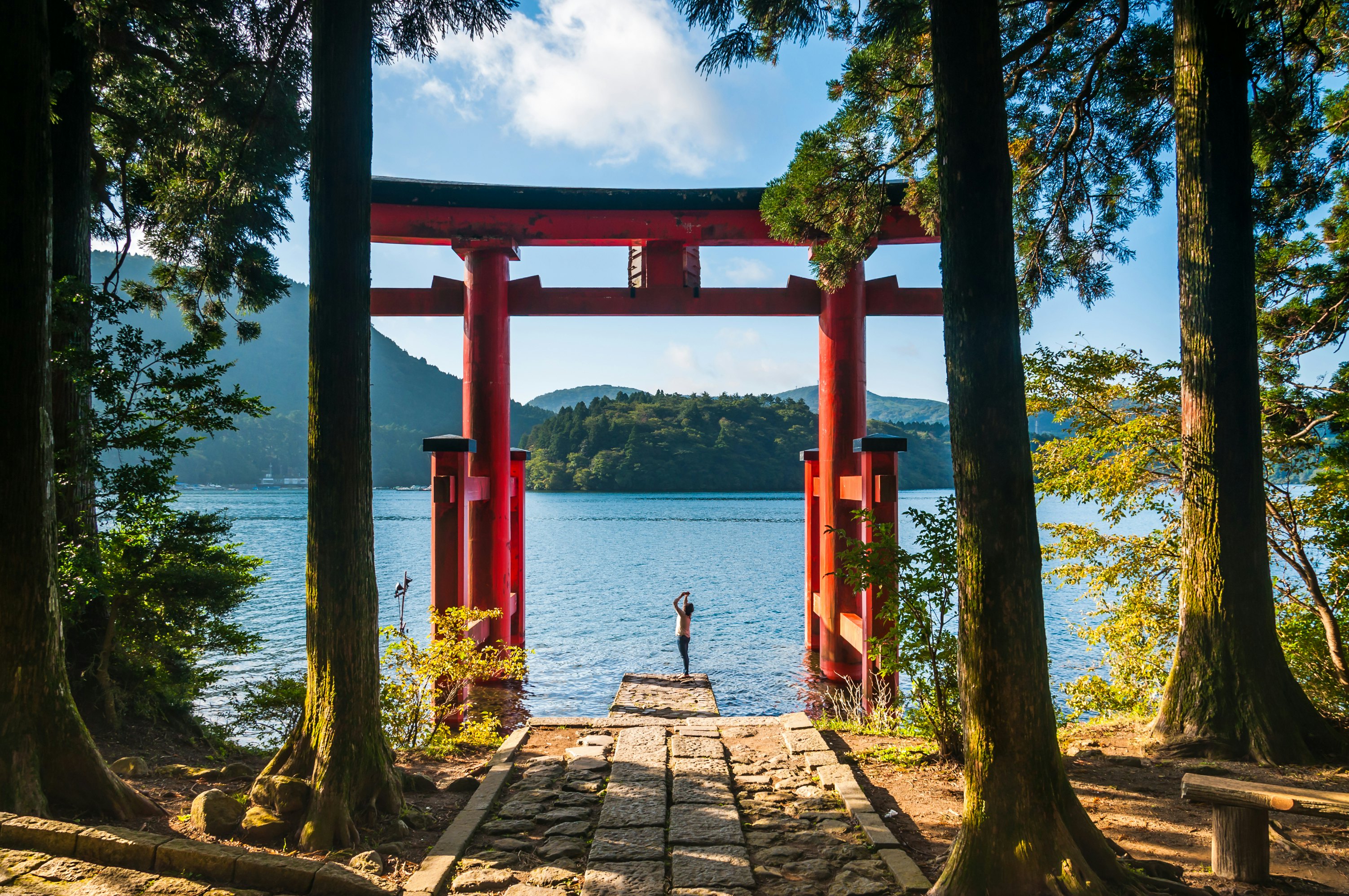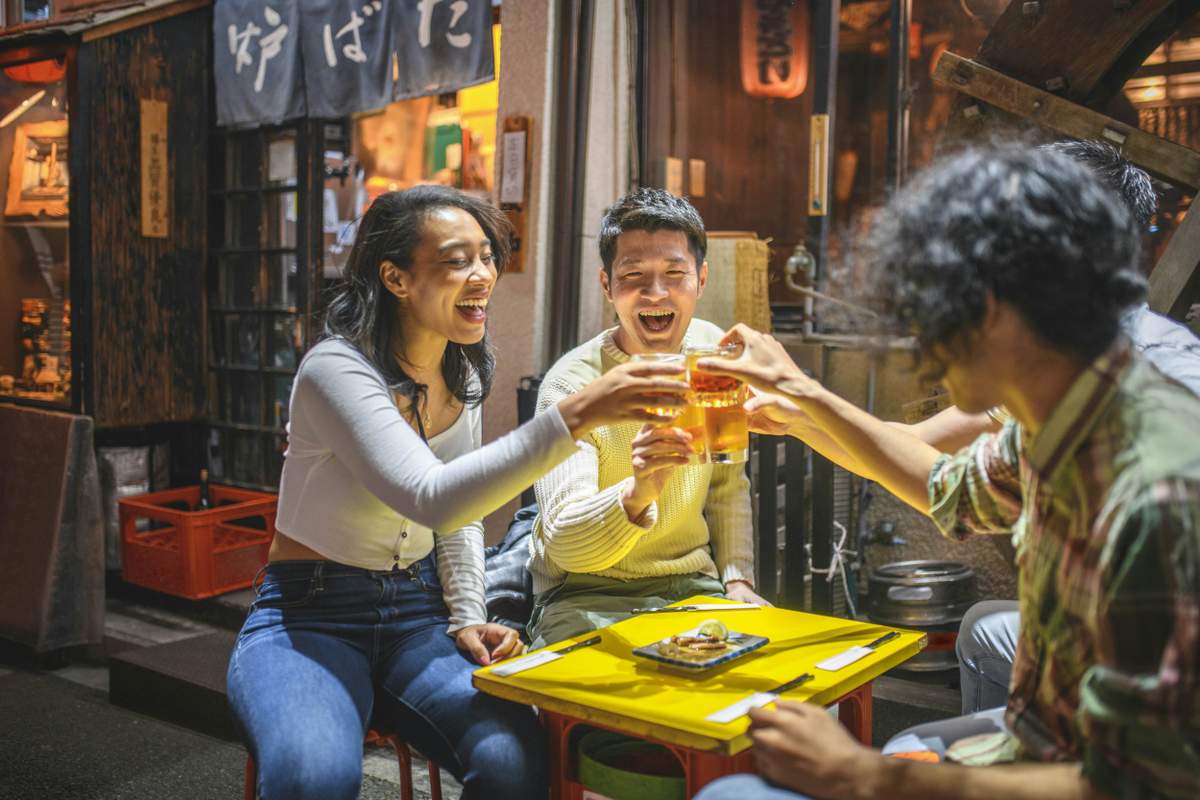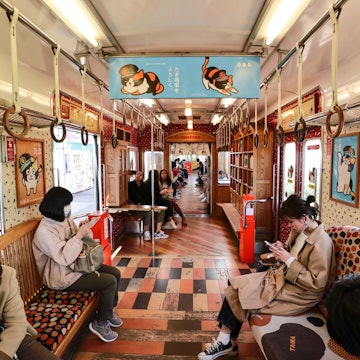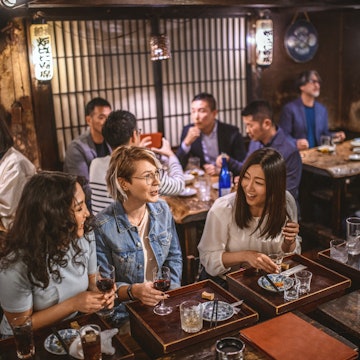
How to get your cell phone connected in Japan: eSIMs, wi-fi and mobile networks

Nov 20, 2024 • 6 min read

Here's what you need to know about cell connectivity and wi-fi when traveling in Japan. Shutterstock
From the vibrant modernity of Tokyo to the timeless traditions of Kyoto, Japan is one of the world’s most beguiling destinations for a multitude of reasons.
While first-time visitors have probably heard about the potential language barriers and cultural differences in Japan, what about the challenge of staying connected while exploring the country?
Whatever your plans in Japan, here’s what you need to know about using your cell phone, finding an eSIM, accessing wi-fi and which service providers might be best for you.
Will my phone work in Japan?
The short answer: yes. But some ways of using your phone are more affordable and more convenient than others.
Traveling around Japan on your domestic phone plan from home, you should be able to connect to local 3G, 4G and 5G networks, but will run up large roaming charges in the process. Instead, it makes sense to buy a local SIM card, rent a pocket wi-fi router, sign up for an international roaming plan or (our choice) opt for an eSIM.
Whatever you decide, it’s important to think about how many gigabytes (GB) of data you might need per day. Navigating with Google Maps, for example, can eat up 200MB per hour of usage, while streaming services such as YouTube and Netflix could run 1GB per hour (in high definition). Most travelers in Japan get by with just under 1GB a day, according to LightPocket.

What mobile networks are available in Japan?
Japan’s four major providers – NTT Docomo, KDDI au, SoftBank and Rakuten Mobile – all operate 3G, 4G and 5G networks with near-nationwide coverage, although signals can fade and disappear the deeper you go into the countryside. Things just might not be as superfast as Japan's high-tech reputation would suggest. According to Speedtest, Japan ranks 58th for mobile speeds, with the four main providers averaging download speeds of 46 to 61 Mbps (megabytes per second) and upload speeds of 6 to 20 Mbps.
One way to access these networks is with a prepaid SIM. Softbank, for example, offers data-only packages running from 3GB for ¥5610 (US$37) to 50GB for ¥9900 (US$64). Smaller companies, however, can often offer better deals, including Mobal, which starts from 8GB for ¥4710 (US$31).
How can I get a local SIM card?
Local prepaid SIM cards can be easily purchased at airport kiosks on arrival. Home electronics stores like Bic Camera and Yodobashi Camera also sell them. In particular, you’ll find multiple vendors at major international airports such as Narita, Haneda and Kansai International. To give one example, the prices with JAL ABC range between ¥3000–9000 (US$20–59), depending on the amount of data and whether you are getting a data-only service or data and voice.
When buying a local card, you’ll need to show your passport. When you pick up your SIM, make sure to confirm the service is working and double-check your phone number before leaving the store.

Is eSIM available in Japan and how does it work here?
Multiple providers offer non-physical Japan eSIM cards, but we recommend Saily as our eSIM partner. Use code LP5 to receive 5% off your Saily mobile data plan in Japan. An eSIM works with all modern smartphones and tablets and can be downloaded and installed via an app in minutes, without the need to visit a store.
With Saily, plans start from US$3.79 for 1GB. For more details, see Saily’s detailed guide to getting connected with an eSIM in Japan.
Where can I find reliable wi-fi in Japan?
In major cities and other areas with notable tourist attractions, you’ll find free public wi-fi in public spaces. You’ll also get access at airports, some trains and cafes. However, the speed and reliability can be patchy. Additionally, you often have to go through registration procedures to gain access, which in some cases won’t be possible in English.
When it comes to wi-fi in accommodations, things are generally positive. Most midrange to luxury hotels offer in-room wi-fi, as do business hotel chains. While some ryokan and minshuku (guesthouses) have wi-fi, many either don’t or it’s limited to the lobby.

Can I stay connected at major tourist sites?
You will find free public wi-fi in many popular areas (including in Kyoto and Tokyo). But reliability and speeds can vary greatly. The further away you go from urban areas, the less likely you are to find public wi-fi. Paying for a SIM or eSIM that connects to local 3G, 4G and 5G networks is a better option.
If you are going to rely on free wi-fi, Softbank’s Free Wi-Fi Passport app will help you connect to 400,000 local hot spots nationwide.
Are there any internet restrictions or censorship laws?
Japan doesn’t have any out-of-the-ordinary censorship laws. It's legal to use a VPN in Japan as long as you don’t engage in any illegal activity, such as piracy or illegal streaming, while doing so.
Will I encounter language barriers when getting connected?
You shouldn’t. The major providers who offer services to inbound travelers all have English-language websites and the staff at airport kiosks can speak English. That said, sign up pages for free wi-fi can often be in Japanese only.
How much does it cost to stay connected in Japan?
That depends on the type of service. Budget local prepaid SIMs can break down to as little as ¥600 (US$3.90) per GB on short-term contacts, although the major providers typically cost more. International eSIM options, like Saily, can run from US$3.79 per GB.

What local tech customs or etiquette should I be aware of?
Most importantly, it’s illegal to use a device while cycling or driving – these laws and the penalties became stricter in November 2024, with fines and prison sentences possible.
In terms of cultural norms, you’ll see manners posters at stations asking people not to walk and text, but lots of people still do. A big no-no is sound: wear headphones if using audio on a device and don’t talk on your phone in quiet spaces such as trains and buses.
Also bear in mind that Japan uses 100v/50Hz in eastern Japan and 100v/60Hz in western Japan (that includes Nagoya and Kyoto), so if you are coming from the US, you likely won’t need a converter. However, Japan uses two-pronged Type A and Type B power outlets, so you will need an adapter for any device with a three-pronged socket.
How do I contact emergency services if needed?
In an emergency, dial 119 for fire, ambulance or rescue and 110 for the police. You will be quickly connected to an English speaker. Another option is to call the 24-hour Japan Visitor Hotline on 050-3816-2787, which offers assistance in English, Chinese and Korean.
It’s also worth downloading some handy apps. Google Maps is great for directions, while Japan Travel by Navitime has rail maps and route planners. Given Japan’s propensity for typhoons and earthquakes, the Safety Tips app is another essential: it has info on what to do should a disaster occur, publishes travel and weather warnings, and can help you find a hospital if you are ill.
This article was produced by Lonely Planet as part of our partnership with Saily. Lonely Planet's advice and opinions are solely our own.















